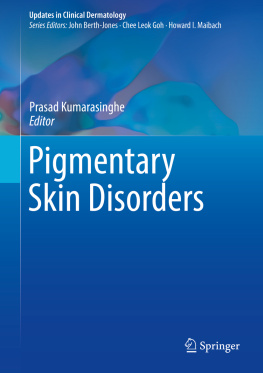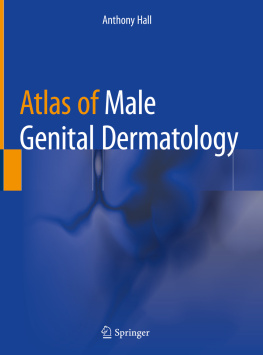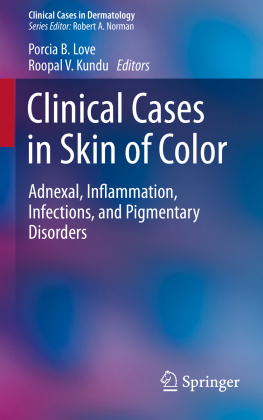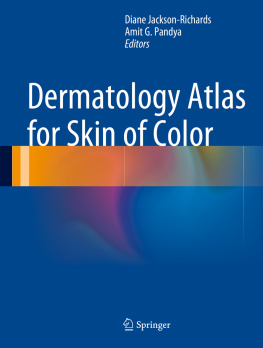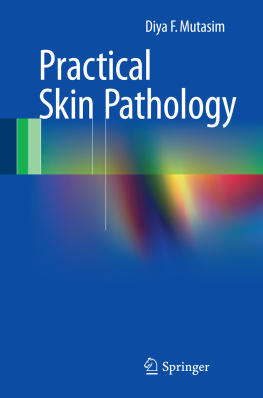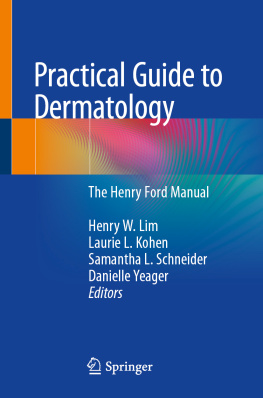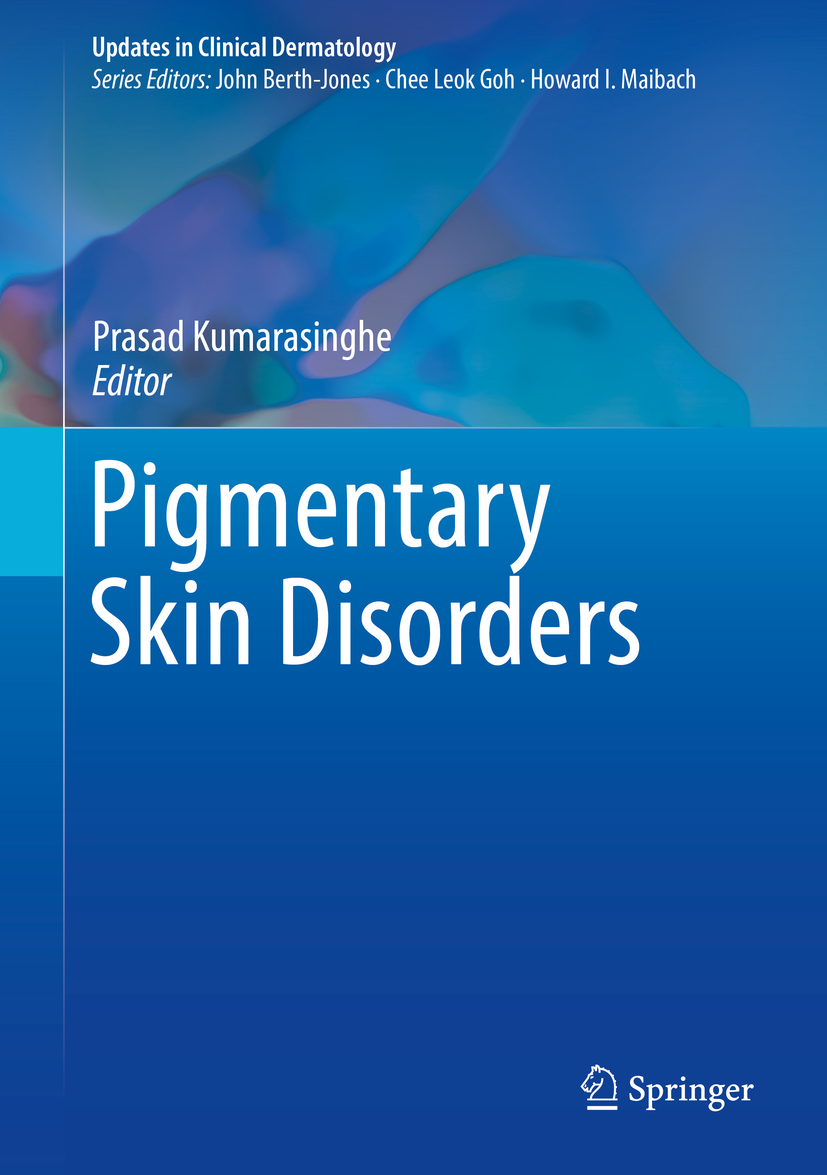Editor
Prasad Kumarasinghe Clinical Professor
Department of Dermatology, Fiona Stanley Hospital and University of Western Australia, Perth, WA, Australia
ISSN 2523-8884 e-ISSN 2523-8892
Updates in Clinical Dermatology
ISBN 978-3-319-70418-0 e-ISBN 978-3-319-70419-7
https://doi.org/10.1007/978-3-319-70419-7
Library of Congress Control Number: 2018931428
Springer International Publishing AG, part of Springer Nature 2018
This work is subject to copyright. All rights are reserved by the Publisher, whether the whole or part of the material is concerned, specifically the rights of translation, reprinting, reuse of illustrations, recitation, broadcasting, reproduction on microfilms or in any other physical way, and transmission or information storage and retrieval, electronic adaptation, computer software, or by similar or dissimilar methodology now known or hereafter developed.
The use of general descriptive names, registered names, trademarks, service marks, etc. in this publication does not imply, even in the absence of a specific statement, that such names are exempt from the relevant protective laws and regulations and therefore free for general use.
The publisher, the authors and the editors are safe to assume that the advice and information in this book are believed to be true and accurate at the date of publication. Neither the publisher nor the authors or the editors give a warranty, express or implied, with respect to the material contained herein or for any errors or omissions that may have been made. The publisher remains neutral with regard to jurisdictional claims in published maps and institutional affiliations.
Printed on acid-free paper
This Springer imprint is published by the registered company Springer International Publishing AG part of Springer Nature
The registered company address is: Gewerbestrasse 11, 6330 Cham, Switzerland
Preface
Pigmentary disorders have received increasing attention in the last two decades. The psychological effects of hyperpigmentation or hypopigmentation can be enormous in a given patient. The impact is not only due to the extent of the disease but also due to the individual patients expectations and the sociocultural implications. Improving the quality of life of each individual should be a treatment goal. While arrest of the disease and reversal of the dyspigmentation are the main treatment goals, when they are not possible, camouflage also plays an important role. The psychological impact of pigmentary disorders such as vitiligo, melasma and macular pigmentation of uncertain aetiology can be severe in dark-skinned patients.
The study of melanocyte has attracted a lot of attention in the recent past. Progress in the management of advanced melanoma has been tremendous in the last few years. Dermoscopy and reflectance confocal microscopy are useful tools in diagnosis of early malignant melanomas where available. Because of greater awareness by communities with fairer skin, melanomas are diagnosed relatively early. In dark-skinned communities, due to lower prevalence and lack of awareness, melanomas are often diagnosed late, leading to poorer outcomes. It is also heartening to note that there are a lot of promising, ongoing research projects now on diseases such as vitiligo giving patients more hope for effective treatment.
This book attempts to address many important topics of skin disorders with dyspigmentation. We do not intend for this to be a textbook that covers the AZ of all pigmentary disorders. It covers the most important hyperpigmentary and hypopigmentary disorders, discusses skin colour measuring devices and techniques such as reflectance confocal microscopy and proposes a practical, comprehensive clinical classification for pigmentary disorders. This book highlights the recent advances in the field of pigmentary disorders. We believe it will be a valuable aid to young doctors, clinical researchers, dermatology trainees and dermatologists.
The authors of the chapters are from 12 countries in many diverse regions of the world, making this truly an international effort. The contributions by the world leaders in disorders of pigmentation are outstanding. I am grateful to all the authors of the chapters and Springer staff for doing an excellent job in making this book project a success. I am also thankful to Prof Chee Leok Goh of Singapore for encouraging me to take on this task.
I hope that this book will serve as a useful reference and a valuable complement to the publications in the field of pigmentary disorders.
Prasad Kumarasinghe
Perth, WA, Australia
Contents
Bernadette Ricciardo and Prasad Kumarasinghe
Riti Bhatia and M. Ramam
Deepani Munidasa , Gerrit Schlippe and Sharnika Abeyakirthi
Benjamin Carew and James Muir
Uday S. Khopkar and Ankit M. Bharti
Nesrine Brahimi and Pascale Guitera
Masahiro Hayashi and Tamio Suzuki
Muhammed Razmi T and Davinder Parsad
Sanjeev V. Mulekar
Germaine Nathalie Relyveld
Nisansala Mahenthi Nagodavithana and Prasad Kumarasinghe
Kyoung-Chan Park and Hee Young Kang
Johannes F. Dayrit and Prasad Kumarasinghe
Michelle Rodrigues and Ana Sofia Ayala-Corts
Melissa A. Levoska , Tasneem F. Mohammad and Iltefat H. Hamzavi
Thiam Seng Colin Theng and Eugene Sern-Ting Tan
Rashmi Sarkar and Shivani Bansal
Priyadarshani Galappatthy and Deepani Rathnayake
Index

